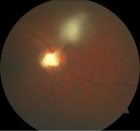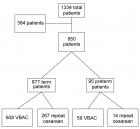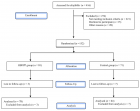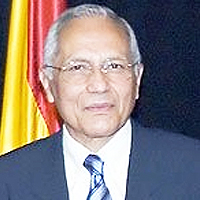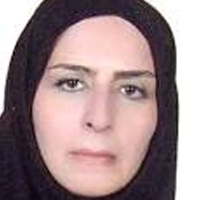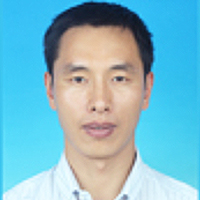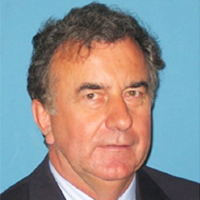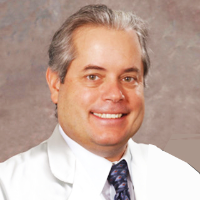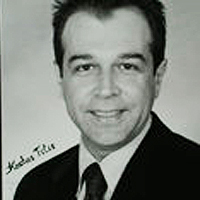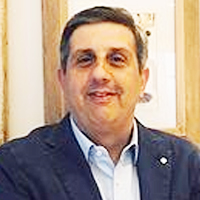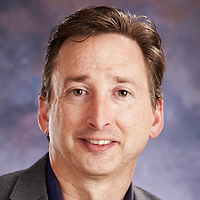Abstract
Research Article
Comparative characterization between autologous serum and platelet lysate under different temperatures and storage times
Camilo Osorio Florez*, Luis Campos, Jessica Guerra, Henrique Carneiro, Leandro Abreu, Andres Ortega, Fabiola Paes, Priscila Fantini and Renata de Pino Albuquerque Maranhão
Published: 12 April, 2023 | Volume 7 - Issue 1 | Pages: 001-009
Therapies using autologous serum and platelet lysate have shown promise among blood and biological products in the treatment of various diseases. The autologous serum has been shown to be a superior alternative to traditional eye drops in treating eye diseases in ophthalmology. Platelet lysate (PL) has recently been considered a more interesting alternative for the treatment of multiple tissues, as it does not have the unfavorable reactions seen with traditional platelet-rich plasma (PRP), making it a valuable blood derivative for use in ocular therapy. There is no definitive comparison in veterinary medicine between PL and autologous serum in terms of the content of Transforming Growth Factor beta 1 (TGF-1), which is known to have chemotactic, mitogenic, matrix formation, and angiogenesis effects on tissues, and beneficial proteins in ocular tissue. This study aimed to estimate the concentrations of TGF-1, total protein, and albumin, as well as autologous serum and platelet lysate, in horses over an 8-day storage period at temperatures of 4 °C and 37 °C.
To produce autologous serum, 63 ml of blood was collected from each animal in seven 9 ml tubes without anticoagulant. For platelet lysate, 180 ml of blood was collected in 50 tubes of 3.6 ml with 3.2% sodium citrate. The most significant findings were the positive relationship between the baseline platelet count in the blood and the final platelet concentration in PRP. Specifically, we found a correlation (R = 0.9) with a p - value of 0.005 between the average baseline platelet level of seven animals and their corresponding PRP results, both on an individual level and as a group. Additionally, there was a correlation between growth factor concentration and PRP platelets, with the highest growth factor concentration in PL. The temperature storage group exhibited higher concentrations of total protein and serum albumin, as well as the maximum amount of growth factor for both products at a temperature of 37 °C.
Read Full Article HTML DOI: 10.29328/journal.ivs.1001038 Cite this Article Read Full Article PDF
References
- Maia L, De Souza MV. Components rich in platelets used in wound healing tendon, ligaments and osteo-articular diseases of animals. Ciência Rural. 2009; 39: 1279–1286.
- De Souza MV, Pinto O, Da Costa MM. Quantification of growth factors in horse skin treated with platelet-rich plasma. 2014; 34: 599–612.
- Mirza AUB, Ghani N, Khan AB. Epitheliotrophic Effect of Autologous Serum in Persistent Corneal Epithelial Defects. Pakistan Journal of Ophthalmology. 2008; 24:19-26.
- López-García JS, García-Lozano I, Rivas L, Martínez-Garchitorena J. Aplicaciones del suero autólogo en oftalmología [Use of autologous serum in ophthalmic practice]. Arch Soc Esp Oftalmol. 2007 Jan;82(1):9-20. Spanish. doi: 10.4321/s0365-66912007000100004. PMID: 17262232.
- Pan Q, Angelina A, Marrone M, Stark WJ, Akpek EK. Autologous serum eye drops for dry eye. Cochrane Database Syst Rev. 2017 Feb 28;2(2):CD009327. doi: 10.1002/14651858.CD009327.pub3. PMID: 28245347; PMCID: PMC5510593.
- Mandelbaum SH, Di Santi, É, Mandelbaum M. Cicatrization: current concepts and auxiliary resources - Part II. An Bras Dermatol. 2003; 78: 525–542.
- Paganela JC, Ribas LM, Santos CA. Abordagem clínica de feridas cutâneas em equinos Clinical approach in equine skin wounds. Revista Portuguesa de Ciências Veterinárias. 2009; 104: 569–572.
- Anitua E, Muruzabal F, Tayebba A, Riestra A, Perez VL, Merayo-Lloves J, Orive G. Autologous serum and plasma rich in growth factors in ophthalmology: preclinical and clinical studies. Acta Ophthalmol. 2015 Dec;93(8):e605-14. doi: 10.1111/aos.12710. Epub 2015 Apr 2. PMID: 25832910.
- Schallmoser K, Henschler R, Gabriel C, Koh MBC, Burnouf T. Production and Quality Requirements of Human Platelet Lysate: A Position Statement from the Working Party on Cellular Therapies of the International Society of Blood Transfusion. Trends Biotechnol. 2020 Jan;38(1):13-23. doi: 10.1016/j.tibtech.2019.06.002. Epub 2019 Jul 17. PMID: 31326128.
- Soares CS, Babo PS, Reis RL, Carvalho PP, Gomes ME. Platelet-Derived Products in Veterinary Medicine: A New Trend or an Effective Therapy? Trends Biotechnol. 2021 Mar;39(3):225-243. doi: 10.1016/j.tibtech.2020.07.011. Epub 2020 Aug 28. PMID: 32868100.
- Penha-Goncalves MN, Onions DE, Nicolson L. Cloning and sequencing of equine transforming growth factor-beta 1 (TGF beta-1) cDNA. DNA Seq. 1997;7(6):375-8. doi: 10.3109/10425179709034059. PMID: 9524819.
- Argüelles D, Carmona JU, Pastor J, Iborra A, Viñals L, Martínez P, Bach E, Prades M. Evaluation of single and double centrifugation tube methods for concentrating equine platelets. Res Vet Sci. 2006 Oct;81(2):237-45. doi: 10.1016/j.rvsc.2005.12.008. PMID: 16969921.
- Watts EJ, Rose MT. Platelet-derived growth factor acts via both the Rho-kinase and p38 signaling enzymes to stimulate contraction in an in vitro model of equine wound healing. Domest Anim Endocrinol. 2010 May;38(4):253-9. doi: 10.1016/j.domaniend.2009.11.004. Epub 2009 Dec 6. PMID: 20036481.
- Sundman EA, Cole BJ, Fortier LA. Growth factor and catabolic cytokine concentrations are influenced by the cellular composition of platelet-rich plasma. Am J Sports Med. 2011 Oct;39(10):2135-40. doi: 10.1177/0363546511417792. Epub 2011 Aug 16. PMID: 21846925.
- Sanak F, Baenninger P, Kaufmann C, Iselin K, Bachmann L, Buhl D, Thiel M. The Lucerne Protocol for the Production of Autologous Serum Eyedrops. Klin Monbl Augenheilkd. 2021 Apr;238(4):346-348. English. doi: 10.1055/a-1354-6565. Epub 2021 Apr 30. PMID: 33930907.
- Gilbertie JM, Schaer TP, Schubert AG, Jacob ME, Menegatti S, Ashton Lavoie R, Schnabel LV. Platelet-rich plasma lysate displays antibiofilm properties and restores antimicrobial activity against synovial fluid biofilms in vitro. J Orthop Res. 2020 Jun;38(6):1365-1374. doi: 10.1002/jor.24584. Epub 2020 Jan 14. PMID: 31922274; PMCID: PMC8018705.
- Perrone G, Lastra Y, González C, Caggiano N, Giménez R, Pareja R, De Simone E. Treatment With Platelet Lysate Inhibits Proteases of Synovial Fluid in Equines With Osteoarthritis. J Equine Vet Sci. 2020 May;88:102952. doi: 10.1016/j.jevs.2020.102952. Epub 2020 Feb 1. PMID: 32303304.
- Hagen A, Lehmann H, Aurich S, Bauer N, Melzer M, Moellerberndt J, Patané V, Schnabel CL, Burk J. Scalable Production of Equine Platelet Lysate for Multipotent Mesenchymal Stromal Cell Culture. Front Bioeng Biotechnol. 2021 Jan 21;8:613621. doi: 10.3389/fbioe.2020.613621. PMID: 33553119; PMCID: PMC7859354.
- Smith JJ, Ross MW, Smith RK. Anabolic effects of acellular bone marrow, platelet rich plasma, and serum on equine suspensory ligament fibroblasts in vitro. Vet Comp Orthop Traumatol. 2006;19(1):43-7. PMID: 16594543.
- Marx RE. Platelet-rich plasma: evidence to support its use. J Oral Maxillofac Surg. 2004 Apr;62(4):489-96. doi: 10.1016/j.joms.2003.12.003. PMID: 15085519.
- Anitua E, Andia I, Ardanza B, Nurden P, Nurden AT. Autologous platelets as a source of proteins for healing and tissue regeneration. Thromb Haemost. 2004 Jan;91(1):4-15. doi: 10.1160/TH03-07-0440. PMID: 14691563.
- Carmona JU, López C, Giraldo CE. Use of autologous platelet concentrates as regenerative therapy for chronic diseases of the equine musculoskeletal system. Archivos de Medicina Veterinaria. 2011; 43:1-10.
- Vendruscolo CP, Carvalho A, Moraes LF. Evaluating the effectiveness of different protocols for preparation of platelet rich plasma for use in equine medicine. Pesquisa Veterinaria Brasileira. 2012; 32: 106-110.
- Andrade MG, de Freitas Brandão CJ, Sá CN, de Bittencourt TC, Sadigursky M. Evaluation of factors that can modify platelet-rich plasma properties. Oral Surg Oral Med Oral Pathol Oral Radiol Endod. 2008 Jan;105(1):e5-e12. doi: 10.1016/j.tripleo.2007.07.032. PMID: 18155603.
- Rushton JO, Kammergruber E, Tichy A, Egerbacher M, Nell B, Gabner S. Effects of three blood derived products on equine corneal cells, an in vitro study. Equine Vet J. 2018 May;50(3):356-362. doi: 10.1111/evj.12770. Epub 2017 Nov 3. PMID: 29044680.
- Springer W, von Ruecker A, Dickerhoff R. Difficulties in determining prophylactic transfusion thresholds of platelets in leukemia patients. Blood. 1998 Sep 15;92(6):2183-4. PMID: 9731080.
- Álvarez ME, López C, Giraldo CE. In-vitro bactericidal activity of equine platelet concentrates, platelet poor plasma, and plasma against methicillin-resistant Staphylococcus aureus. Archivos de Medicina Veterinaria. 2011; 43: 155–161.
- Anitua E, Alonso R, Girbau C, Aguirre JJ, Muruzabal F, Orive G. Antibacterial effect of plasma rich in growth factors (PRGF®-Endoret®) against Staphylococcus aureus and Staphylococcus epidermidis strains. Clin Exp Dermatol. 2012 Aug;37(6):652-7. doi: 10.1111/j.1365-2230.2011.04303.x. Epub 2012 Feb 14. PMID: 22329713.
- Drago L, Bortolin M, Vassena C, Taschieri S, Del Fabbro M. Antimicrobial activity of pure platelet-rich plasma against microorganisms isolated from oral cavity. BMC Microbiol. 2013 Feb 25;13:47. doi: 10.1186/1471-2180-13-47. PMID: 23442413; PMCID: PMC3599521.
- Drago L, Bortolin M, Vassena C, Romanò CL, Taschieri S, Del Fabbro M. Plasma components and platelet activation are essential for the antimicrobial properties of autologous platelet-rich plasma: an in vitro study. PLoS One. 2014 Sep 18;9(9):e107813. doi: 10.1371/journal.pone.0107813. PMID: 25232963; PMCID: PMC4169456.
- López C, Alvarez ME, Carmona JU. Temporal Bacteriostatic Effect and Growth Factor Loss in Equine Platelet Components and Plasma Cultured with Methicillin-Sensitive and Methicillin-Resistant Staphylococcus aureus: A Comparative In Vitro Study. Vet Med Int. 2014;2014:525826. doi: 10.1155/2014/525826. Epub 2014 Nov 24. PMID: 25506468; PMCID: PMC4260436.
- Bernardi M, Albiero E, Alghisi A, Chieregato K, Lievore C, Madeo D, Rodeghiero F, Astori G. Production of human platelet lysate by use of ultrasound for ex vivo expansion of human bone marrow-derived mesenchymal stromal cells. Cytotherapy. 2013 Aug;15(8):920-9. doi: 10.1016/j.jcyt.2013.01.219. Epub 2013 Apr 24. PMID: 23623274.
- Gilbertie JM, Long JM, Schubert AG, Berglund AK, Schaer TP, Schnabel LV. Pooled Platelet-Rich Plasma Lysate Therapy Increases Synoviocyte Proliferation and Hyaluronic Acid Production While Protecting Chondrocytes From Synoviocyte-Derived Inflammatory Mediators. Front Vet Sci. 2018 Jul 4;5:150. doi: 10.3389/fvets.2018.00150. PMID: 30023361; PMCID: PMC6039577.
- Issaq HJ, Xiao Z, Veenstra TD. Serum and plasma proteomics. Chem Rev. 2007 Aug;107(8):3601-20. doi: 10.1021/cr068287r. Epub 2007 Jul 18. PMID: 17636887.
- Giraldo CE, López C, Álvarez ME, Samudio IJ, Prades M, Carmona JU. Effects of the breed, sex and age on cellular content and growth factor release from equine pure-platelet rich plasma and pure-platelet rich gel. BMC Vet Res. 2013 Feb 12;9:29. doi: 10.1186/1746-6148-9-29. PMID: 23402541; PMCID: PMC3577464.
- Textor JA, Norris JW, Tablin F. Effects of preparation method, shear force, and exposure to collagen on release of growth factors from equine platelet-rich plasma. Am J Vet Res. 2011 Feb;72(2):271-8. doi: 10.2460/ajvr.72.2.271. PMID: 21281204.
- Bieback K, Hecker A, Kocaömer A, Lannert H, Schallmoser K, Strunk D, Klüter H. Human alternatives to fetal bovine serum for the expansion of mesenchymal stromal cells from bone marrow. Stem Cells. 2009 Sep;27(9):2331-41. doi: 10.1002/stem.139. PMID: 19544413.
- Burnouf T, Strunk D, Koh MB, Schallmoser K. Human platelet lysate: Replacing fetal bovine serum as a gold standard for human cell propagation? Biomaterials. 2016 Jan;76:371-87. doi: 10.1016/j.biomaterials.2015.10.065. Epub 2015 Oct 28. PMID: 26561934.
- Textor JA, Tablin F. Activation of equine platelet-rich plasma: comparison of methods and characterization of equine autologous thrombin. Vet Surg. 2012 Oct;41(7):784-94. doi: 10.1111/j.1532-950X.2012.01016.x. Epub 2012 Jun 28. PMID: 22742830.
- Gutiérrez CM, López C, Giraldo CE, Carmona JU. Study of a Two-Step Centrifugation Protocol for Concentrating Cells and Growth Factors in Bovine Platelet-Rich Plasma. Vet Med Int. 2017;2017:1950401. doi: 10.1155/2017/1950401. Epub 2017 Oct 30. PMID: 29214094; PMCID: PMC5682892.
- Steller D, Herbst N, Pries R, Juhl D, Hakim SG. Impact of incubation method on the release of growth factors in non-Ca2+-activated PRP, Ca2+-activated PRP, PRF and A-PRF. J Craniomaxillofac Surg. 2019 Feb;47(2):365-372. doi: 10.1016/j.jcms.2018.10.017. Epub 2018 Nov 15. PMID: 30578012.
- Donnelly KS, Giuliano EA, Sharm A, Mohan RR. Suberoylanilide hydroxamic acid (vorinostat): its role on equine corneal fibrosis and matrix metalloproteinase activity. Vet Ophthalmol. 2014 Jul;17 Suppl 1:61-8. doi: 10.1111/vop.12129. PMID: 25126665.
- Haber M, Cao Z, Panjwani N, Bedenice D, Li WW, Provost PJ. Effects of growth factors (EGF, PDGF-BB and TGF-beta 1) on cultured equine epithelial cells and keratocytes: implications for wound healing. Vet Ophthalmol. 2003 Sep;6(3):211-7. doi: 10.1046/j.1463-5224.2003.00296.x. PMID: 12950652.
- Arias MM. What does the p-value really mean? Pediatric Primary Care. 2017; 19: 377–381.
- Anitua E, Andía I, Sanchez M, Azofra J, del Mar Zalduendo M, de la Fuente M, Nurden P, Nurden AT. Autologous preparations rich in growth factors promote proliferation and induce VEGF and HGF production by human tendon cells in culture. J Orthop Res. 2005 Mar;23(2):281-6. doi: 10.1016/j.orthres.2004.08.015. PMID: 15779147.
Figures:
Similar Articles
-
Exploring novel medical applications for commonly used veterinary drug (tilmicosin antibiotic)Fatma I Abo El-Ela*,El-Banna HA. Exploring novel medical applications for commonly used veterinary drug (tilmicosin antibiotic). . 2017 doi: 10.29328/journal.ivs.1001001; 1: 001-016
-
Investigation on Theileria lestoquardi infection among sheep and goats in Nyala, South Darfur State, SudanOsman TM,Ali AM*,Hussein MO,El Ghali A,Salih DA. Investigation on Theileria lestoquardi infection among sheep and goats in Nyala, South Darfur State, Sudan. . 2017 doi: 10.29328/journal.ivs.1001002; 1: 017-023
-
Mechanism-related Teratogenic, Hormone Modulant and other Toxicological effects of Veterinary and agricultural surfactantsAndrás Székács*. Mechanism-related Teratogenic, Hormone Modulant and other Toxicological effects of Veterinary and agricultural surfactants. . 2017 doi: 10.29328/journal.ivs.1001003; 1: 024-031
-
Efficacies of 11% Lactoferricin and 0.05% Chlorhexidine Otological Solution compared, in the treatment of microbial otic overgrowth: A randomized single blinded studyLuisa Cornegliani*,Federico Leone,Francesco Albanese,Mauro Bigliati,Natalia Fanton,Antonella Vercelli. Efficacies of 11% Lactoferricin and 0.05% Chlorhexidine Otological Solution compared, in the treatment of microbial otic overgrowth: A randomized single blinded study. . 2017 doi: 10.29328/journal.ivs.1001004; 1: 032-041
-
Ocular surface Rose Bengal staining in normal dogs and dogs with Keratoconjunctivitis Sicca: Preliminary findingsWilliams DL*,Griffiths A. Ocular surface Rose Bengal staining in normal dogs and dogs with Keratoconjunctivitis Sicca: Preliminary findings. . 2017 doi: 10.29328/journal.ivs.1001005; 1: 042-046
-
Influence of Vitamin E on the Disposition Kinetics of Florfenicol after single and multiple oral administrations in Broiler ChickensFatma Ibrahim Abo El-Ela*,Hossny Awad El-Banna,Manal B El-Deen,Tohamy MA. Influence of Vitamin E on the Disposition Kinetics of Florfenicol after single and multiple oral administrations in Broiler Chickens. . 2017 doi: 10.29328/journal.ivs.1001006; 1: 047-057
-
Effects of carazolol on electrocadiographic and trace element status in sheepsRemzi Gonul,Lora Koenhemsı,Handan Aydın Vural*,Tevfik Gulyasar,Hasret Demırcan Yardıbı,Erman OR,Bora Barutcu. Effects of carazolol on electrocadiographic and trace element status in sheeps. . 2018 doi: 10.29328/journal.ivs.1001007; 2: 001-004
-
Livestock insurance a tool to reduce economical loss of farmers from climate change related HazardsAnanta Koirala*,Priyanka Bhandari. Livestock insurance a tool to reduce economical loss of farmers from climate change related Hazards. . 2018 doi: 10.29328/journal.ivs.1001008; 2: 005-008
-
The failure to provide an effective veterinary service to sheep in AustraliaJAL Maxwell*. The failure to provide an effective veterinary service to sheep in Australia. . 2018 doi: 10.29328/journal.ivs.1001009; 2: 009-017
-
Does Veterinary Science have a future in Australia?JAL Maxwell*. Does Veterinary Science have a future in Australia?. . 2018 doi: 10.29328/journal.ivs.1001010; 2: 018-026
Recently Viewed
-
Hepato-Pulmonary syndrome and Porto-Pulmonary Hypertension: Rare combination cause of Hypoxemia in patient with end-stage renal failure on Hemodialysis and hepatitis C Induced Decompensated CirrhosisAwad Magbri*,Mariam El-Magbri,Eussera El-Magbri. Hepato-Pulmonary syndrome and Porto-Pulmonary Hypertension: Rare combination cause of Hypoxemia in patient with end-stage renal failure on Hemodialysis and hepatitis C Induced Decompensated Cirrhosis. Arch Vas Med. 2017: doi: 10.29328/journal.avm.1001002; 1: 008-012
-
Deep Learning-Powered Genetic Insights for Elite Swimming Performance: Integrating DNA Markers, Physiological Biometrics and Performance AnalyticsRahul Kathuria,Reeta Devi,Asadi Srinivasulu*. Deep Learning-Powered Genetic Insights for Elite Swimming Performance: Integrating DNA Markers, Physiological Biometrics and Performance Analytics. Int J Bone Marrow Res. 2025: doi: 10.29328/journal.ijbmr.1001020; 8: 006-015
-
Pure Erythroid Leukemia: The Sole Acute Erythroid LeukemiaFauzia Shafi Khan*,Khalid Mahmood,Alia Ahmad. Pure Erythroid Leukemia: The Sole Acute Erythroid Leukemia. Int J Bone Marrow Res. 2017: doi: 10.29328/journal.ijbmr.1001001; 1: 001-005
-
Causal Link between Human Blood Metabolites and Asthma: An Investigation Using Mendelian RandomizationYong-Qing Zhu, Xiao-Yan Meng, Jing-Hua Yang*. Causal Link between Human Blood Metabolites and Asthma: An Investigation Using Mendelian Randomization. Arch Asthma Allergy Immunol. 2023: doi: 10.29328/journal.aaai.1001032; 7: 012-022
-
The alterations effects in phosphorus of erythropoietin and U-74389GC Τsompos*,C Panoulis,A Triantafyllou,CG Zografos,K Tsarea,M Karamperi,A Papalois. The alterations effects in phosphorus of erythropoietin and U-74389G. Int J Bone Marrow Res. 2020: doi: 10.29328/journal.ijbmr.1001012; 3: 021-026
Most Viewed
-
Impact of Latex Sensitization on Asthma and Rhinitis Progression: A Study at Abidjan-Cocody University Hospital - Côte d’Ivoire (Progression of Asthma and Rhinitis related to Latex Sensitization)Dasse Sery Romuald*, KL Siransy, N Koffi, RO Yeboah, EK Nguessan, HA Adou, VP Goran-Kouacou, AU Assi, JY Seri, S Moussa, D Oura, CL Memel, H Koya, E Atoukoula. Impact of Latex Sensitization on Asthma and Rhinitis Progression: A Study at Abidjan-Cocody University Hospital - Côte d’Ivoire (Progression of Asthma and Rhinitis related to Latex Sensitization). Arch Asthma Allergy Immunol. 2024 doi: 10.29328/journal.aaai.1001035; 8: 007-012
-
Causal Link between Human Blood Metabolites and Asthma: An Investigation Using Mendelian RandomizationYong-Qing Zhu, Xiao-Yan Meng, Jing-Hua Yang*. Causal Link between Human Blood Metabolites and Asthma: An Investigation Using Mendelian Randomization. Arch Asthma Allergy Immunol. 2023 doi: 10.29328/journal.aaai.1001032; 7: 012-022
-
An algorithm to safely manage oral food challenge in an office-based setting for children with multiple food allergiesNathalie Cottel,Aïcha Dieme,Véronique Orcel,Yannick Chantran,Mélisande Bourgoin-Heck,Jocelyne Just. An algorithm to safely manage oral food challenge in an office-based setting for children with multiple food allergies. Arch Asthma Allergy Immunol. 2021 doi: 10.29328/journal.aaai.1001027; 5: 030-037
-
Snow white: an allergic girl?Oreste Vittore Brenna*. Snow white: an allergic girl?. Arch Asthma Allergy Immunol. 2022 doi: 10.29328/journal.aaai.1001029; 6: 001-002
-
Cytokine intoxication as a model of cell apoptosis and predict of schizophrenia - like affective disordersElena Viktorovna Drozdova*. Cytokine intoxication as a model of cell apoptosis and predict of schizophrenia - like affective disorders. Arch Asthma Allergy Immunol. 2021 doi: 10.29328/journal.aaai.1001028; 5: 038-040

If you are already a member of our network and need to keep track of any developments regarding a question you have already submitted, click "take me to my Query."






